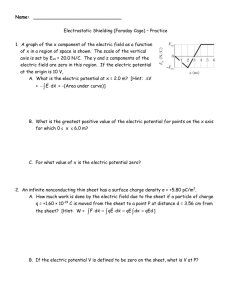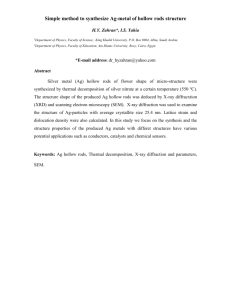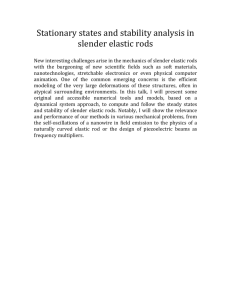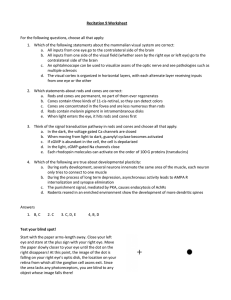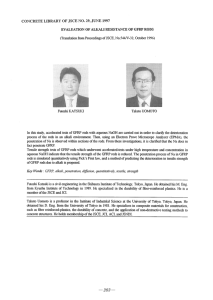Bioterrorism Surveillance at the Olympic Games
advertisement
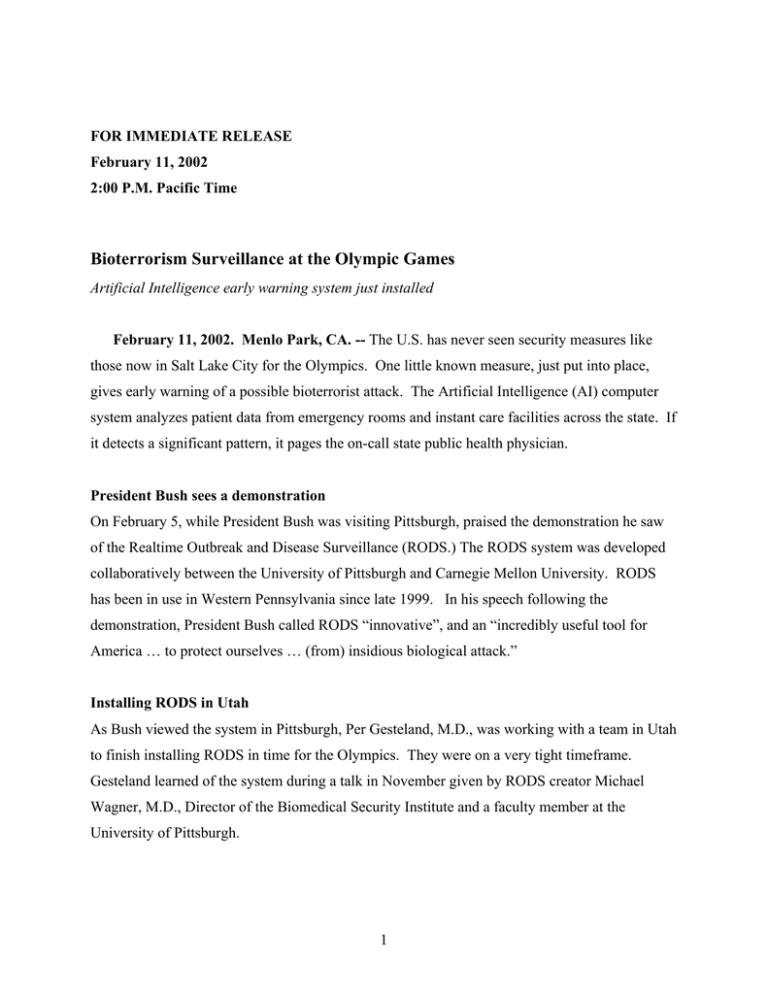
FOR IMMEDIATE RELEASE February 11, 2002 2:00 P.M. Pacific Time Bioterrorism Surveillance at the Olympic Games Artificial Intelligence early warning system just installed February 11, 2002. Menlo Park, CA. -- The U.S. has never seen security measures like those now in Salt Lake City for the Olympics. One little known measure, just put into place, gives early warning of a possible bioterrorist attack. The Artificial Intelligence (AI) computer system analyzes patient data from emergency rooms and instant care facilities across the state. If it detects a significant pattern, it pages the on-call state public health physician. President Bush sees a demonstration On February 5, while President Bush was visiting Pittsburgh, praised the demonstration he saw of the Realtime Outbreak and Disease Surveillance (RODS.) The RODS system was developed collaboratively between the University of Pittsburgh and Carnegie Mellon University. RODS has been in use in Western Pennsylvania since late 1999. In his speech following the demonstration, President Bush called RODS “innovative”, and an “incredibly useful tool for America … to protect ourselves … (from) insidious biological attack.” Installing RODS in Utah As Bush viewed the system in Pittsburgh, Per Gesteland, M.D., was working with a team in Utah to finish installing RODS in time for the Olympics. They were on a very tight timeframe. Gesteland learned of the system during a talk in November given by RODS creator Michael Wagner, M.D., Director of the Biomedical Security Institute and a faculty member at the University of Pittsburgh. 1 In less than two months, Gesteland’s team was able to ready the system. It now covers 80% of the state, including the entire geographic area of the Olympics. It takes data from 80% of the health care systems in the region, including Intermountain Health Care, the official provider of health care for the Olympics. AI for anti-terrorism “The RODS system is a first step in a direction you’ll see a lot more of over the coming five years,” observes Tom Mitchell, Fredkin Professor of AI and Learning at Carnegie Mellon University, and President of the American Association for Artificial Intelligence. “It’s pretty obvious that a lot can be done with AI machine learning and data mining algorithms if you take the trouble to link data sources together. September 11 is motivating us to take the trouble to link together the data to find general trends and anomalous events.” -----------------------------------------------------------------------------------------------------------About AAAI Founded in 1979, the American Association for Artificial Intelligence (www.aaai.org) is a nonprofit scientific membership society devoted to advancing the science and practice of AI. Its mission is to: (1) advance the scientific understanding of the mechanisms underlying intelligent thought and behavior, (2) facilitate their embodiment in machines, (3) serve as an information resource for research planners and the general public concerning trends in AI, and (4) offer training for the current and coming generations of AI researchers and practitioners. # # # For press inquiries only, contact: En Park, Blue Sky Communications (425) 635-0996 en@sprintmail.com 2
